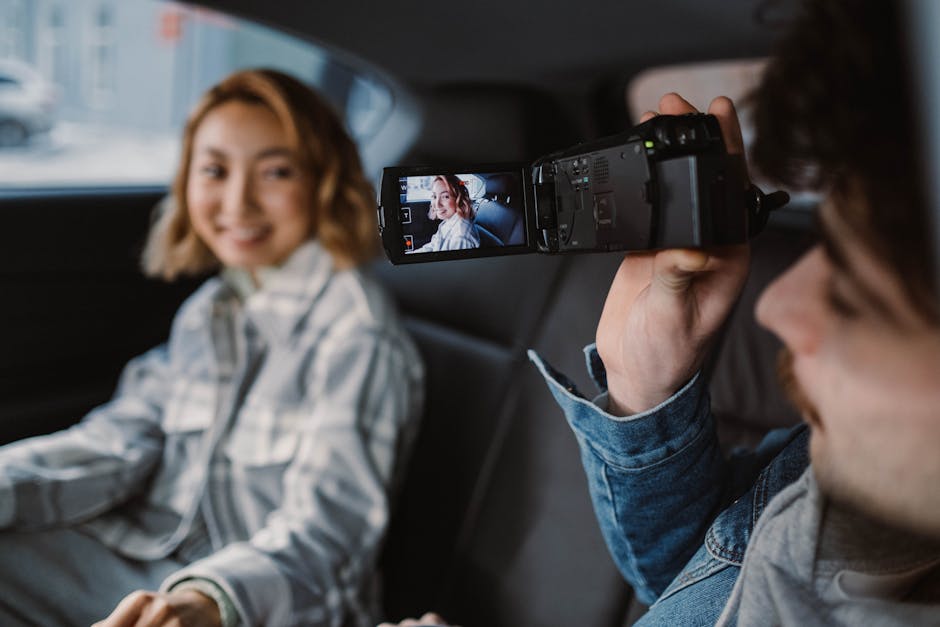Crafting a Compelling Narrative in Your Travel Films
Travel films have a unique power to transport audiences into unfamiliar lands, offering them an immersive experience that goes beyond just visuals. But what makes some travel films stand out more than others? It's not just about stunning landscapes or exotic locations; it's the story behind the journey. Crafting a compelling narrative in your travel film is essential to captivate viewers and provide meaning to the scenes they’re watching. A well-told story connects emotionally, giving context and deeper understanding to the places and people you encounter on your travels.

The Importance of Storytelling in Travel Films
While beautiful locations can grab attention, they often lack emotional engagement without a solid narrative framework. Storytelling is what transforms a series of clips into a cohesive experience. When viewers watch a travel film, they want to feel something, whether it’s the excitement of discovery, the melancholy of parting, or the joy of cultural connection. It’s through storytelling that filmmakers can evoke these emotions and make their films more memorable.
A strong narrative doesn't necessarily need to follow a strict chronological order. Some filmmakers choose to start with a climactic moment and then backtrack, while others weave multiple stories together. The key is to ensure that your story has structure, an introduction, development, climax, and resolution. Even if you're not speaking directly in the film, your sequence of shots should still tell a clear story.
For example, let’s say you’re filming in Morocco. Instead of simply showing scenes from Marrakech’s bustling souks and desert landscapes, tell the story of a local vendor who sells handmade rugs. Show his process of weaving, his interaction with customers, and how his family has been doing this for generations. This personal touch gives context to the broader visuals and allows viewers to connect on a more intimate level with what they see.
Choosing the Right Elements for Your Narrative
When crafting your travel film's narrative, it’s important to be selective about what elements you include. Not every moment during your trip will contribute to the story you're trying to tell. This means leaving out stunning shots that don’t add value to your message or cluttering your film with too many disjointed scenes.
A useful approach is thinking about these core elements when building your narrative:
- Theme: What overarching message or emotion do you want to convey? Whether it's adventure, self-discovery, or cultural exploration, having a central theme helps guide your storytelling decisions.
- Character: Is there a person or group of people central to your story? Highlighting individual experiences can ground your narrative in relatable human emotions.
- Conflict/Challenge: Every good story involves some form of challenge or obstacle. In travel films, this could be something as simple as navigating an unfamiliar city or dealing with unforeseen weather conditions.
- Resolution: How does everything come together in the end? A satisfying conclusion provides closure for both you as a filmmaker and your audience.
By focusing on these elements, you'll be better equipped to create a meaningful narrative that resonates with viewers long after they've finished watching.
Pacing and Editing: Maintaining Audience Engagement
Pacing plays an essential role in keeping viewers engaged throughout your film. Too slow, and they'll lose interest; too fast, and they might miss key moments. The goal is to strike a balance where each scene serves its purpose without dragging on unnecessarily.
This is where editing becomes critical. As you sift through hours of footage from your travels, carefully select moments that advance the narrative rather than relying on flashy transitions or effects. Pay attention to how each shot flows into the next, smooth transitions help maintain momentum and keep audiences invested in your story.

An effective way to pace your film is by alternating between fast-paced action sequences (like hiking up a mountain) and slower moments (like resting at a local café). This creates natural pauses that allow viewers time to process what they've seen while building anticipation for what's coming next.
| Pacing Technique | Impact on Audience |
|---|---|
| Slow Transitions & Ambient Sound | Create a reflective mood and allow emotional depth |
| Quick Cuts & Upbeat Music | Evoke excitement and energy during action scenes |
| Cinematic Drone Shots | Add scale and grandeur to landscapes |
| Close-ups & Personal Interviews | Foster intimacy and connection with characters |
Pacing also involves managing music and sound design effectively. Music should complement the tone of each scene but never overpower it, matching high-energy music with action sequences and softer tunes for more contemplative moments.
Using Cinematic Techniques to Strengthen Your Narrative
The technical aspects of filmmaking (camera angles, lighting, composition) all play into how effectively you can tell your story visually. For travel films, capturing sweeping landscapes from wide angles gives viewers a sense of place while using close-up shots on individuals brings them closer into personal stories.
Cinematography can vary depending on the type of equipment you have on hand. While some prefer using high-end cameras like DSLRs or mirrorless cameras for more control over image quality, others may rely solely on smartphones due to portability during their travels. No matter what gear you're using, it's crucial to understand basic filming techniques that enhance storytelling such as:
- Establishing Shots: These are wide shots that set up where you are, whether it's an expansive desert or urban cityscape.
- B-roll Footage: Complementary footage used alongside interviews or main scenes, like market vendors going about their daily activities or nature shots enhancing context around events happening onscreen.
- Aerial Shots: Drone footage offers unique perspectives over vast terrains like mountains or coastlines, emphasizing scale within narratives built around nature exploration.
- Natural Light: Harnessing golden hour lighting (shortly after sunrise or before sunset) gives outdoor shots warmth while indoor scenes benefit from soft diffused light through windows rather than harsh overhead lights.
Each technique amplifies different aspects of your narrative (from providing scale through aerial views down towards intimacy by zooming closer onto individuals' expressions during heartfelt exchanges) offering variety within visual storytelling approaches used throughout diverse environments captured across numerous destinations visited during trips undertaken worldwide documenting experiences shared along way forward shared online platforms thereafter uploaded globally accessible audiences worldwide alike similarly captivating attention instantly appealing emotionally equally lasting impressions once finished forever remembered always fondly cherished forevermore thereafter fondly reminisced warmly!
A well-crafted travel film is much more than just pretty visuals stitched together, it’s about creating an emotional journey for your audience through purposeful storytelling choices combined seamlessly executed cinematic techniques capturing essence adventures unforgettable magic fleeting moments traveling new lands faraway places forever etched minds hearts souls those lucky enough witness firsthand cinematic beauty remarkable tales woven intricately skilled filmmakers storytellers alike shaping modern-day artistry dynamic medium known filmmaking passion pursuit lifelong learning exploration unknown boundaries rediscover rediscovered storytelling artistry craft perfected honed practiced evolved